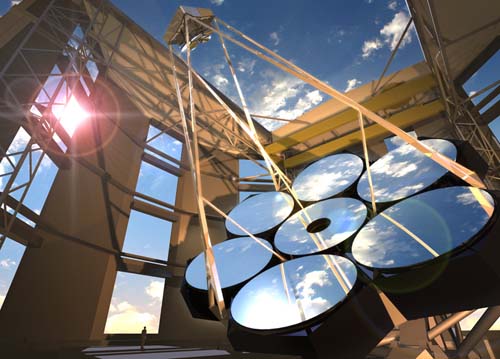Better Than Hubble—From the Ground
In the age of orbiting telescopes such as the Hubble and the not-yet-launched James Webb Space Telescope, it’s worth giving a nod to the dramatic advances made in building ground-based telescopes.The board of trustees of the Carnegie Institution for Science just authorized the release of $59.2 mill…
In the age of orbiting telescopes such as the Hubble and the not-yet-launched James Webb Space Telescope, it's worth giving a nod to the dramatic advances made in building ground-based telescopes.
The board of trustees of the Carnegie Institution for Science just authorized the release of $59.2 million to move forward with the construction of the Giant Magellan Telescope.

Magellan will be the first in the next generation of ground-based observatories that will peer deep into the universe from a mountaintop at the Las Campanas Observatory in the Chilean Andes. It will combine seven primary mirror segments, each of them 27.5 feet across, resulting in the equivalent of a mirror more than 80 feet in diameter (Hubble's is seven feet, 10 inches across). The telescope will be larger and more powerful than any previous optical telescope, will have 10 times the light gathering power of current ground-based telescopes, and, thanks to the latest advances in adaptive optics, will produce images ten times sharper than those from Hubble.
While Magellan will probe the big mysteries of cosmology such as dark matter and the origins of the first stars and galaxies, the telescope will also keep its keen eyes peeled for planets orbiting nearby stars.
Here's a nice primer on the five ground-based telescopes that qualify as ELTs (Extremely Large Telescopes), only two of which have become operational.
The board of trustees of the Carnegie Institution for Science just authorized the release of $59.2 million to move forward with the construction of the Giant Magellan Telescope.

Magellan will be the first in the next generation of ground-based observatories that will peer deep into the universe from a mountaintop at the Las Campanas Observatory in the Chilean Andes. It will combine seven primary mirror segments, each of them 27.5 feet across, resulting in the equivalent of a mirror more than 80 feet in diameter (Hubble's is seven feet, 10 inches across). The telescope will be larger and more powerful than any previous optical telescope, will have 10 times the light gathering power of current ground-based telescopes, and, thanks to the latest advances in adaptive optics, will produce images ten times sharper than those from Hubble.
While Magellan will probe the big mysteries of cosmology such as dark matter and the origins of the first stars and galaxies, the telescope will also keep its keen eyes peeled for planets orbiting nearby stars.
Here's a nice primer on the five ground-based telescopes that qualify as ELTs (Extremely Large Telescopes), only two of which have become operational.